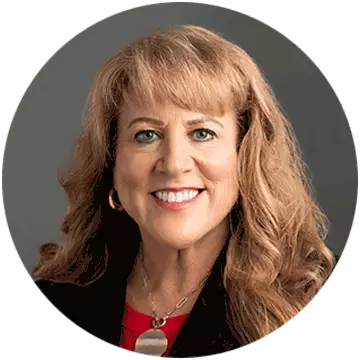K–12 teaching in rural vs. urban schools

Written by Maile Timon

Reviewed by Pamela M. Roggeman, EdD, Dean, College of Education

For anyone exploring a career in K–12 education, understanding the impact of a school’s setting is essential. The landscape of education in the United States is diverse and complex, with students attending schools in a wide range of settings. Two of the most distinct settings are rural and urban schools. For those considering a career in education, we’ll explore here some opportunities and challenges of each.
From country roads to city streets teaching in K–12 in urban schools
What is it like to teach in urban schools? Big cities can be exciting places to live and work. For teachers, this can translate to distinct experiences and opportunities.
Diverse student populations
Urban schools may offer more opportunity for connection between educators and students who come from diverse ethnic and cultural backgrounds. The educational environment, with its focus on learning and sharing ideas, offers the chance to learn about one another’s race, culture and ethnicity.
This is more than a sound bite. According to the Child Development journal, students who experience cross-ethnic friendships feel safer and less vulnerable in school.
There’s also the practical advantage of meeting and befriending people from across cultural divides: It opens the door to open-mindedness about other ethnic backgrounds, which in turn can open the door to learning.
Access to technology and resources
Technology has become ubiquitous in our personal and professional lives. According to a study from the National Skills Coalition, 92% of jobs require digital skills. Some might argue that meaningful integration of technology early in the learning experience can play a role in preparing for such jobs. In fact, EdTech points to the relationship between early access to technology and an equitable learning experience among students.
Teachers can also leverage various technological resources (including computers and tablets, digital libraries, e-textbooks and online learning platforms) to encourage participation, make learning interactive and engage students with different learning styles.
Of course, being in an urban setting doesn’t guarantee unlimited access to technology. Many urban and rural schools, in fact, experience a similar lack of funding to implement technology in the classroom, despite the eagerness of teachers and students to do so. For well-funded suburban and urban schools, however, technology is a significant advantage.
Beyond technology, educators in urban settings may have easier access to such educational experiences and resources as a science center, museums or other historical sites that can extend learning beyond the classroom.
Professional development opportunities and networking
Learning by doing is only part of the equation for teachers. To be able to solve unique challenges and stay up to date on new teaching methods, educators must pursue continuing education.
Teachers in urban settings can take advantage of larger populations to network, collaborate, share resources and explore mentorship opportunities.
Teaching K–12 in rural schools
Escaping the crowds and activity of urban settings results in some unique opportunities for rural schools. Read on to explore some of them.
Close-knit communities and personalized learning
Smaller rural schools promote close-knit communities, which allow parents, teachers and administrators to forge close relationships that support students’ academic success. This can create a positive learning experience for students, teachers and parents.
Rural schools are generally much smaller than their urban counterparts. With smaller class sizes, teachers can tailor lesson plans and devote more personalized attention to each student based on individual needs.
Cultural immersion and hands-on opportunities
Students and educators in rural schools often experience a strong sense of community, which can strengthen students’ and teachers’ decision-making ability, sense of identity and shared values.
In rural K–12 schools, students and teachers can also engage in a diverse range of hands-on experiences within the local environment and community. Some of these experiences might involve outdoor science and natural exploration, agricultural activities, community service projects, outdoor adventures, and local history and heritage.
These types of hands-on opportunities offer plenty of advantages. They can enrich the learning experience; engage students by bridging theoretical knowledge with practical, real-world application; and cultivate problem-solving skills and resilience.
Challenges in teaching K–12 in urban schools
Urban schools face their own challenges, as well, including the following:
Student disengagement
Larger classroom sizes can make it more challenging to provide personalized attention or address individual learning needs. This can lead to reduced student engagement and performance.
Socioeconomic differences
While both rural and urban schools might face funding issues, poverty-stricken urban populations face increased challenges with health and safety, hunger and housing, according to NCES. These issues may affect students’ ability to learn and present a challenge for teachers who need to connect families with necessary support resources.
Language and cultural barriers
While a diverse student population can be an advantage in terms of creating emotional connections and a sense of security among students, it also presents certain challenges for educators. For example, teachers may have to bridge language or knowledge gaps and adapt their curriculum to accommodate such differences.
Challenges in teaching K–12 in rural schools
Rural schools face different circumstances (and therefore different challenges) than urban schools, including the following:
Limited resources
While rural schools serve nearly one-fifth of all American students in public schools, they often lack access to educational resources like technology and advanced placement courses.
This can put the onus on teachers to adapt their teaching methods. Leveraging online learning tools, partnering with community organizations and encouraging project-based learning can help bridge the resource gap.
Diverse educational needs
Like any other school, rural schools enroll students with diverse needs and abilities, including from low-income backgrounds or with learning differences. Limited specialized support services to address such needs can potentially lead to achievement gaps. Teachers must adopt differentiated teaching strategies and work closely with families to provide tailored support to help ensure all students have the opportunity to succeed.
Distance and commuting
Teachers and students in rural districts may have to travel long distances to get to school. This not only eats up time, but disruptions to transportation — a broken car, a bus delay — can impact their educational experience and professional development opportunities for teachers.
“In rural schools, you’re fighting a challenging battle to get resources for professional development and to start programs,” Roggeman says. “You might have one high school, and children might have to travel 20 miles to get to that school.”
Distance and its inconveniences give rise to another challenge: teacher shortages. REL Midwest reports in its documentary that rural schools are more likely to experience teacher recruitment and retention challenges due to low compensation, geographic isolation and limited ability for teachers to specialize.
Student outcomes in urban vs. rural schools
Academic outcomes for students in K–12 schools may vary significantly between urban and rural settings.
Students from rural communities graduate from high school at rates that are higher than the national average. But students in urban areas are more likely to continue their education after high school.
According to the U.S. Department of Education, urban students nationally were 74% more likely to enroll in college than rural students and 106% more likely than rural students to attain a bachelor’s degree.
Urban students generally have more access to advanced placement (AP) classes and extracurricular activities to prepare them for college than students in rural areas. “It’s tough to find staff in rural areas for higher level subjects in math and science and tough to find that AP offering,” Roggeman says. “We’re doing a disservice to students in rural areas that just don’t have access to the same opportunities.”
Learn more about rural and urban schools
Is your interest piqued about rural and urban schools? University of Phoenix prepares aspiring educators through online degree programs, certificate programs and continuing education, including a bachelor’s or master’s degree in education, and a doctoral degree.

ABOUT THE AUTHOR
A graduate of Johns Hopkins University and its Writing Seminars program and winner of the Stephen A. Dixon Literary Prize, Michael Feder brings an eye for detail and a passion for research to every article he writes. His academic and professional background includes experience in marketing, content development, script writing and SEO. Today, he works as a multimedia specialist at University of Phoenix where he covers a variety of topics ranging from healthcare to IT.

ABOUT THE REVIEWER
As dean of the University of Phoenix College of Education, Pamela Roggeman has spent over a decade in higher education teacher preparation in both the public and private sector. Her experience has included national partnerships that help to advance thought leadership in the field of education. Dr. Roggeman also serves as the President of the Arizona Educational Foundation’s Board of Directors.
This article has been vetted by University of Phoenix's editorial advisory committee.
Read more about our editorial process.


